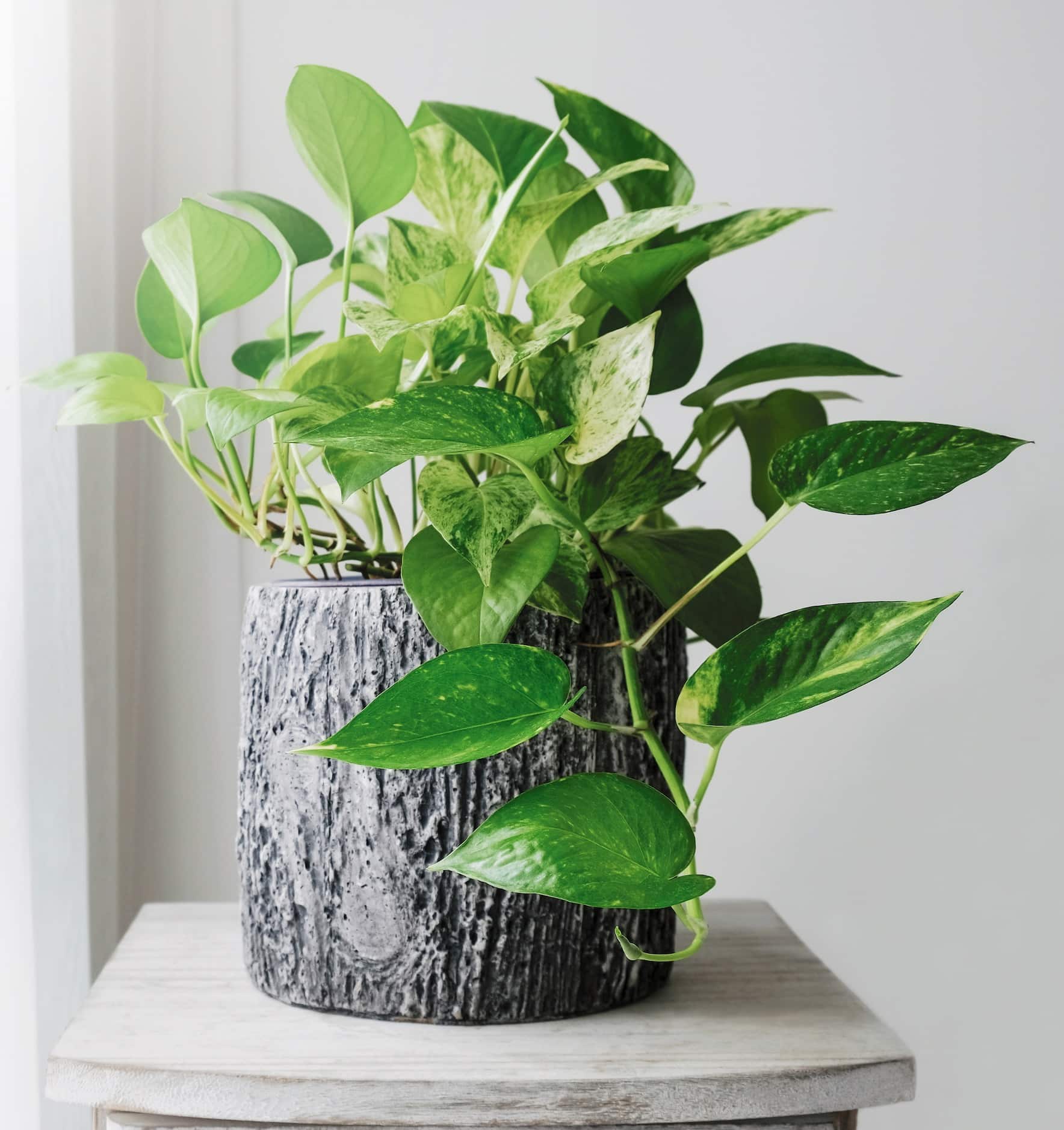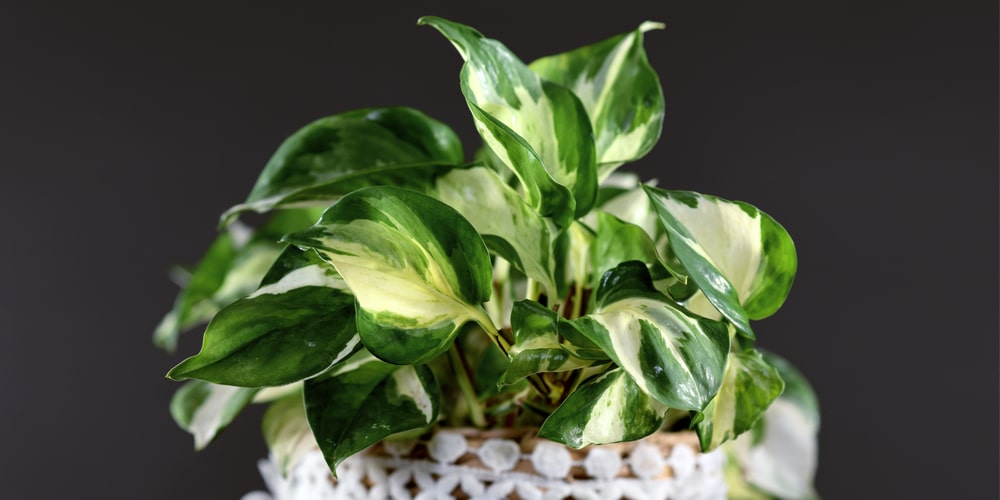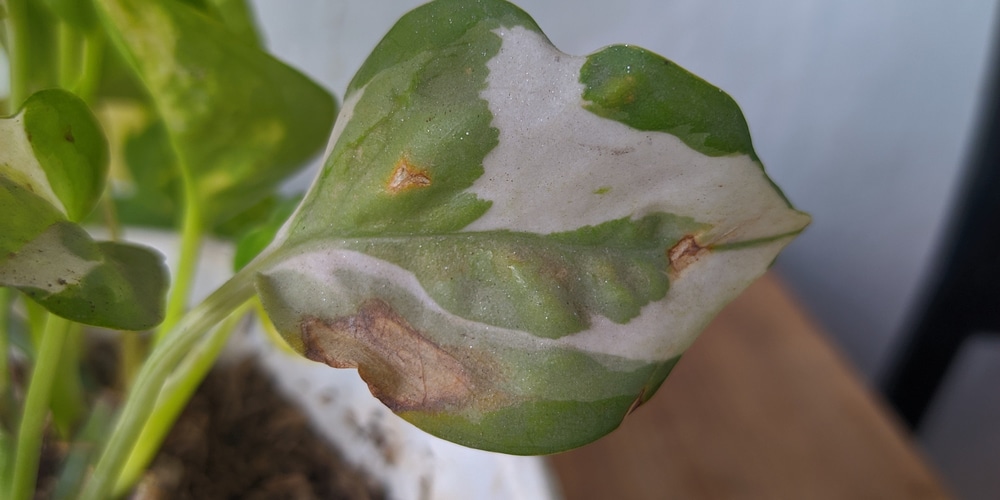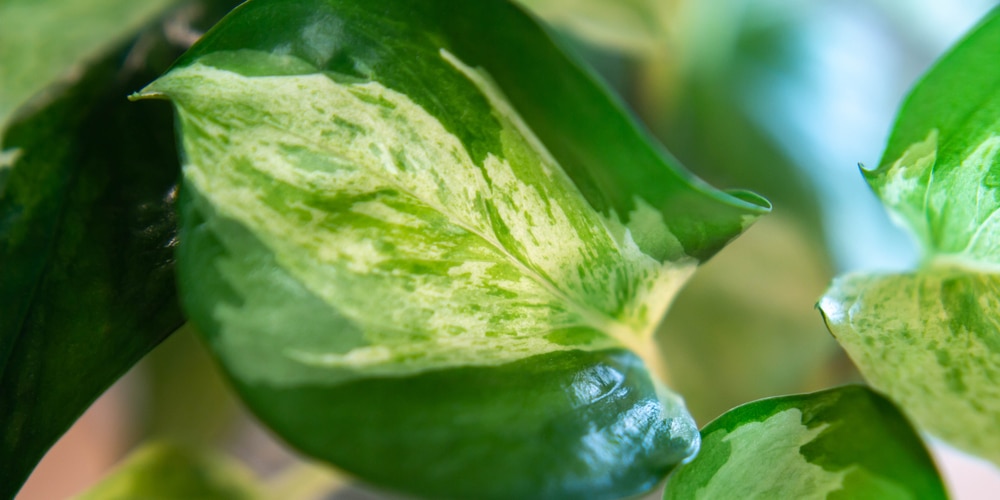
Perhaps you’ve been away on vacation and left your Pothos plant with a neighbor, only to find when you return home that they’ve been slowly killing it with kindness.
When a pothos plant is overwatered, it becomes waterlogged and will suffer from root rot, making your plant’s leaves turn yellow.
Or maybe you went away and left your plants, and your Pothos has completely dried out. Underwatering can also have very similar symptoms to over-watering.
The plant will look wilted but will feel dry. Let’s look at how to tell if your pothos plant has been under or over watered and how to revive your plant in each situation.
Quick Help Table
| Condition | Signs to Look For | What to Do | Ongoing Care |
|---|---|---|---|
| Overwatered | Yellowing leaves, mushy stem, moldy soil | 1. Stop watering immediately. 2. Remove the plant from its pot and inspect the roots. Trim away any black or mushy roots with sterile scissors. 3. Repot in fresh, well-draining soil and ensure the pot has proper drainage holes. | 1. Allow the soil to dry out significantly before watering again. 2. Adjust your watering schedule to prevent future overwatering. Water only when the top inch of soil is dry. 3. Ensure good air circulation around the plant. |
| Underwatered | Drooping leaves, dry and brittle leaves, dry soil | 1. Soak the pot in a sink or basin of water for about 45 minutes to rehydrate evenly. 2. Allow excess water to drain completely. | 1. Gradually adjust your watering schedule to keep the soil slightly moist but not waterlogged. 2. Check the soil moisture level regularly, aiming to water when the top inch of soil feels dry to the touch. 3. Consider increasing humidity around the plant if it’s in a particularly dry environment. |
Pothos Plants
Pothos Watering Best Practices
Pothos plants are tropical in nature and require regular watering. The soil should be well-draining to help avoid overwatering. You can keep the soil moist but should ensure it isn’t soggy. These plants are susceptible to root rot if they are overwatered.
It’s best to water Pothos plants using the ‘soak and dry method. You can let your plant’s topsoil dry out between waterings. Test the soil with your finger and then if it feels dry, give your plant a good watering. Pothos plants should be watered regularly during the growing season. You can reduce watering in the fall and winter.
As mentioned above, both over and underwatering can have the same symptoms. To tell if your plant has been incorrectly watered, you can test the soil by pushing your finger into the ground. Here are the symptoms of an overwatered/ underwatered Pothos plant and what to do to save your plant:
Overwatered Pothos Plant Signs
Overwatering is a very common problem for pothos and other houseplants. Becoming waterlogged will stress your plant and affect its roots, causing them to become rotten. When potted plants suffer from root rot, it’s caused not only by overwatering but also because of drainage issues. If the excess water isn’t able to drain away from your plant’s roots, they will become rotten.
Overwatered pothos will begin to turn yellow, and the leaves will then brown. Their foliage will also feel soft and limp; you may also notice brown spots or water blisters on the leaf’s foliage. When plants are given more water than they can utilize, the water will become stagnant, and your plant may start to smell. Excess water will also fill molecules in the soil’s air pockets. This will mean that there is less oxygen available to your plant’s roots, and your pothos will start to suffocate. Eventually, the roots that are started of oxygen will die and begin to rot. This is how root rot occurs.
How to Save an Overwatered Pothos Plant?
If you have an overwatered pothos plant, the best thing to do is repot it. Repotting in new soil will allow your plant’s roots to dry out and hopefully revive your plant. Whether or not your plant can be saved will depend on how much of the root system has been affected by root rot. Follow these steps to successfully treat and repot your overwatered pathos plant.
1. Remove the plant from its pot
You’ll first need to assess the extent of the damage by removing your plant from its pot. This will allow you to look at its roots to see how bad the root rot is and determine whether your plant can be saved.
2. Remove the soil
Remove as much soil as possible from around the plant’s roots. If the soil is very wet and waterlogged, it will be affecting the plant’s roots. The soil should be thrown away. Don’t re-use the soil as it will contain fungus, which could affect other plants or re-infect your pothos plant.
3. Cut off rotten roots
The roots of a pothos plant should be firm and, if cut, will look white in the middle. Rotton roots feel soggy and are black or brown inside. You can remove rotten roots by cutting them off with a sharp knife.
4. Treat with a fungicide
Next, treat your plant’s roots with a fungicide so that the healthy roots don’t become rotten. You can also remove any dead leaves from your plant.
5. Repot your plant overwatered pothos
Repot your plant using new soil and a new pot. It’s also a good idea to add a layer of stones or gravel to the bottom of your plant to help with drainage. Don’t water it for a week, as it’s best to leave the plant to dry out. When you resume watering, be careful not to repeat the same mistakes and overwater your plant again.
Underwatered Pothos Plant Signs
An underwatered pothos plant will look wilted and brown. You may even notice that your plant looks thinner or smaller due to dehydration. The leaves will feel dry and crisp or may have a wrinkled appearance. Plants lose water through their foliage due to evaporation, and if your plant has been underwatered or left in the hot sun, it may be suffering from dehydration.
When there’s a lack of water in the soil, your plant will need to exert much more effort than usual to get moisture from the ground. As water is responsible for the health of the plant’s cells. A lack of water will cause the plant’s cells to shrink. If the drought continues for a few days or weeks, your plant will look visibly smaller and will eventually die.
How to Revive an Underwatered Pothos Plant
To revive your plant, you can give it a good watering. You may also need to move the plant out of the sun. Pothos shouldn’t be grown in direct sunlight as excess heat and light can cause dehydration, and the leaves may even become sunburnt.
Conclusion
It is possible to revive an overwatered or underwatered Pothos, but you should aim to get the watering right. Watering and proper trimming can make a Pothos thicker and bushier. All plants have slightly different watering needs. As Pothos are tropical plants, they should be left to dry out slightly before being watered again. They do need regular watering throughout the drying season. Watering can be reduced in the late fall, throughout the winter.
Related:
Last update on 2025-06-06 / Affiliate links / Images from Amazon Product Advertising API






